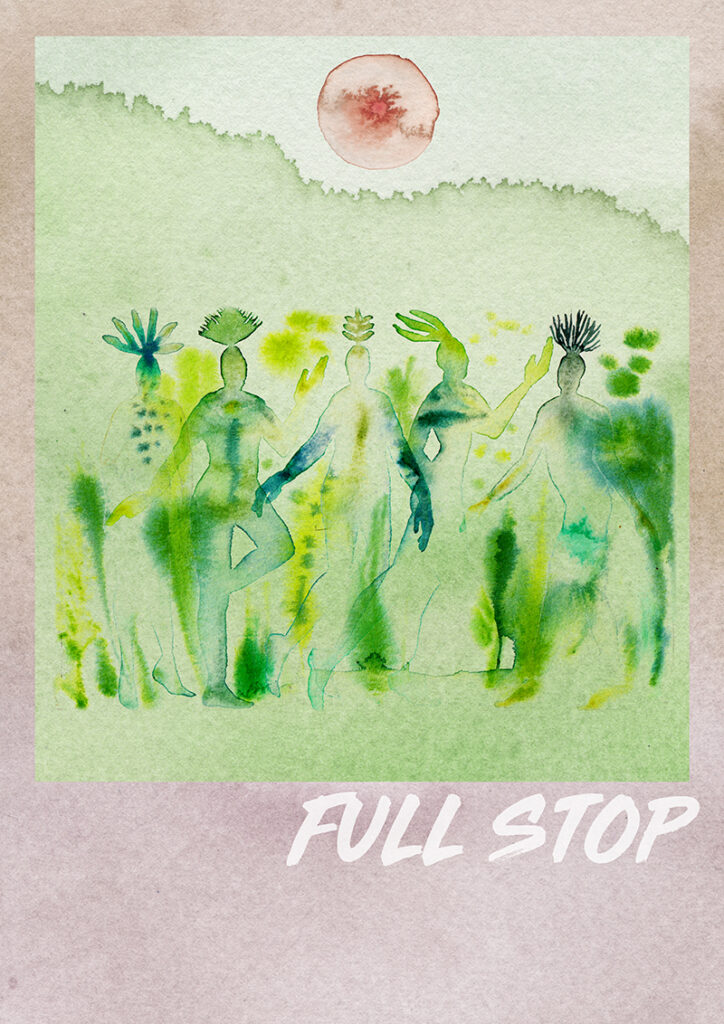The following is the introduction to the latest issue of the Full Stop Quarterly. You can purchase the issue here or subscribe at our Patreon page.

There’s a language between the languages, where a translation lives. With true fidelity a long-sought ideal dispensed of, translators seek that rhyme of language where the meaning shines through, even if that takes them into this third realm. This other place is where Full Stop ventures in this quarterly issue.
As a time of distance nears an unresolved conclusion, communication and reverberation becomes more important (we will, once again, occupy the same tight spaces). What does the writer mean, and how close do we need to get to know? Does the shape of what their words are bouncing off of change their meaning?
In his essay on Foucault, Adam Fales writes about various attempts to pathologize incidents in the philosopher’s life which, in an effort to understand better, just end up reflecting “our own sense of order, unity, and discontinuity; or, put another way, what we think constitutes a life.” Try as we might to dissolve ourselves into the work of another (and ego-death is certainly on the table while Fales discusses Foucault tripping in the desert), all we’re left with is mirrors.
Sometimes the discrepancies in what’s reflected denote significant cultural differences (even if the languages are similar). Switching between Swedish and English, Portuguese and Spanish, Jessica Gaitán Johannesson’s coupled protagonists struggle to decide which language to speak to their unborn child, knowing that by choosing just one or two, they’re cutting off a way of thinking that’s only accessed through that specific code. In her review of How We Are Translated, Allysson Casais finds meaning in this struggle, this constant comparing of thing and word and meaning, with the side-by-side translations appearing as poetry and “the space of the paper gaining relevance much like the verses themselves.”
Translation as ekphrasis, as a wandering into a new form like traversing shifting neighborhoods, is what Argentine writer Cecilia Pavón gets at in her interview with Briana Byron. “I think that a good translator improves the text, or takes it one step further. I hate the idea that translation has to be totally literal when really it should be another text,” Pavón says of the translations of her own works, embracing the transformations and reconfigurations.
These liberties can be taken too far, writes George Angell in his scathing review of a recent translation of Sabahattin Ali’s Madonna in a Fur Coat. “Freely/Dawe represent what they have produced as a translation when, by any fair definition of the word, it isn’t,” writes Angell. “To make matters worse—much worse—they misread the Turkish again and again. In the process, they turn the sharp, beautiful artistic lines of Madonna in a Fur Coat into a blurry mess.” A mirror so warped, it painfully distorts the ideas of a dead man and leaves the reader blind to even an impression of the original text.
So what happens when the author makes the leap themselves? That’s the question facing Youssef Rakha in Madeline Carey’s essay on the Egyptian novelist. Rakha’s past novels have been translated from Arabic to English, but his newest book, written in English by the multi-lingual Rakha, has failed to find a publisher. That raises a question about these interloping translators and their intended audience: “How interested are Western readers in literature in English that comes from a place so different from our own? Or perhaps I should ask: What is the nature of our interest?” Carey asks. Could the nature of translation for commercial consumption be simply to help exotify the author? Are we once again just seeing that dimmed mirror?
Regardless of the demands of the western market, Yugoslav-born Dubravka Ugrešić believes it’s up to authors themselves to determine who rules this third space, between language and language and nation and nation. “There are so many contemporary young writers who, like me, live between several cultures,” Ugrešić says in her interview with Adam Dalva. “These authors need their modern theoretical platform. Would that ‘platform’ be called transnational literature, world literature, or post-national literature?” Ultimately, Ugrešić sees herself as a “literary smuggler,” able to get forbidden or forgotten goods into the minds of western audiences (an inversion of the western translator, imposing their own ideas onto a work).
This cultural continuity, a smuggling of ideas into other works, aims to survive war, famine, plague, and isolation. While we were plagued for much of the past two years, our isolation came to mirror previous historical moments. In her essay on the parallels between Shirley Jackson’s The Haunting of Hill House and Ottessa Moshfegh’s Eileen, Ana Quiring writes that the novels, both set in mid-century New England, “register the power of female isolation less as productive anger, more as destructive force.” It’s possible the world we are returning to will be a much more difficult one for the literary smugglers, as language atrophies in the face of such isolation, and people remain apart, scared to closely inspect one another. Let us hope for a closeness and melding, like the figures conjured by artist Caroline Casey throughout this issue. While our miasmatic wanderings will birth still new and horrible things, the beauty and creation of trying to extend and comprehend the meaning of a work, of translation, is a realm worth occupying together.
This post may contain affiliate links.







